- News
- Reviews
- Bikes
- Accessories
- Accessories - misc
- Computer mounts
- Bags
- Bar ends
- Bike bags & cases
- Bottle cages
- Bottles
- Cameras
- Car racks
- Child seats
- Computers
- Glasses
- GPS units
- Helmets
- Lights - front
- Lights - rear
- Lights - sets
- Locks
- Mirrors
- Mudguards
- Racks
- Pumps & CO2 inflators
- Puncture kits
- Reflectives
- Smart watches
- Stands and racks
- Trailers
- Clothing
- Components
- Bar tape & grips
- Bottom brackets
- Brake & gear cables
- Brake & STI levers
- Brake pads & spares
- Brakes
- Cassettes & freewheels
- Chains
- Chainsets & chainrings
- Derailleurs - front
- Derailleurs - rear
- Forks
- Gear levers & shifters
- Groupsets
- Handlebars & extensions
- Headsets
- Hubs
- Inner tubes
- Pedals
- Quick releases & skewers
- Saddles
- Seatposts
- Stems
- Wheels
- Tyres
- Health, fitness and nutrition
- Tools and workshop
- Miscellaneous
- Tubeless valves
- Buyers Guides
- Features
- Forum
- Recommends
- Podcast
TECH NEWS
Tour Tech 2013: Jacob Fuglsang's Specialized S-Works Tarmac SL4
Astana’s Jakob Fuglsang was outsprinted - you might say outsmarted - by Garmin-Sharp’s Dan Martin for the win in the 9th stage of the Tour de France yesterday, but the 28-year-old Danish rider proved again that he’s a serious talent at the top level.
Earlier this season, Fuglsang finished fourth in the Dauphiné while he won both the Tour of Luxembourg and the Tour of Austria last year. He also has a fourth place finish in Amstel Gold and 11th overall in the Vuelta to his name.
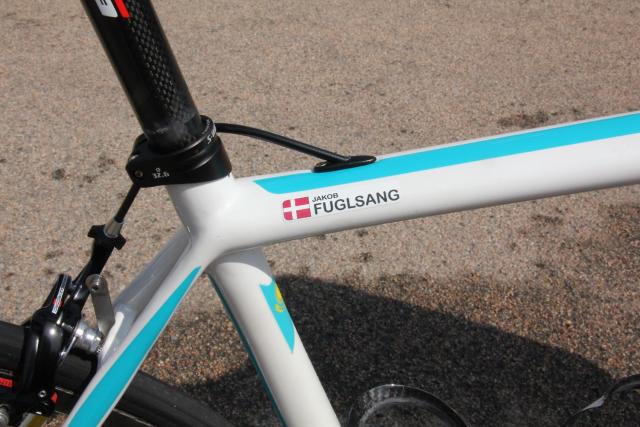
Fuglsang criticized the management of RadioShack-Nissan last season and was left out of the Tour de France squad as a result. He left at the end of the season to join Astana on a three-year contract.
This is Fuglsang’s Specialized S-Works Tarmac SL4. The SL4 has been in the range for three years now but it’s still a fine bike in terms of its lightness and stiffness.
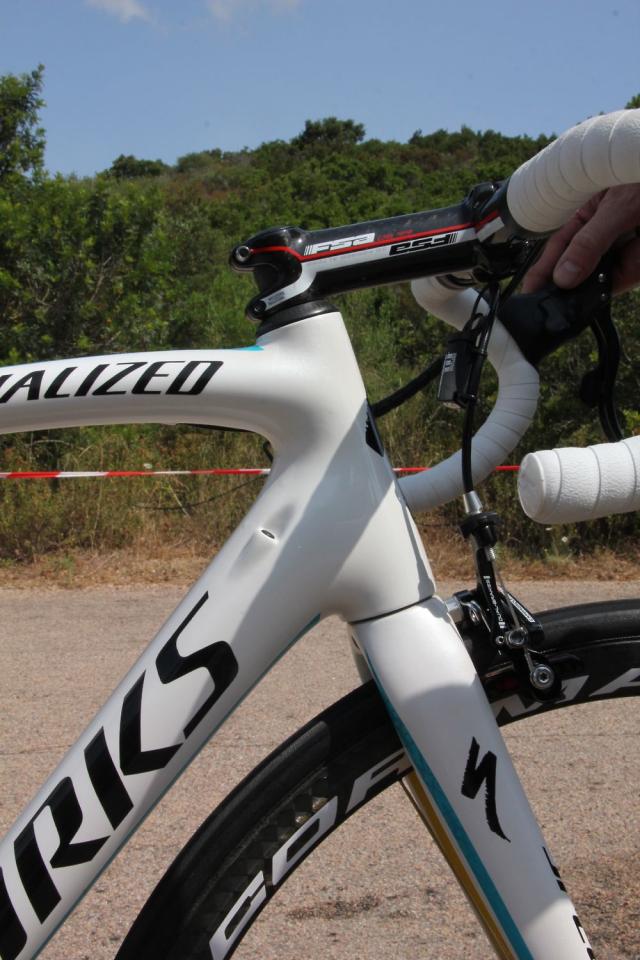
As is the case with most top-end performance bikes, the SL4 comes with a tapered head tube/fork steerer. Although Specialized go with a standard 1 1/8in upper bearing, the lower bearing is a far more unusual 1 3/8in, the idea being to provide confident handling and sharp steering. As you can see, Fuglsang slams his stem right down on top of the headset to get the front end as low as possible.
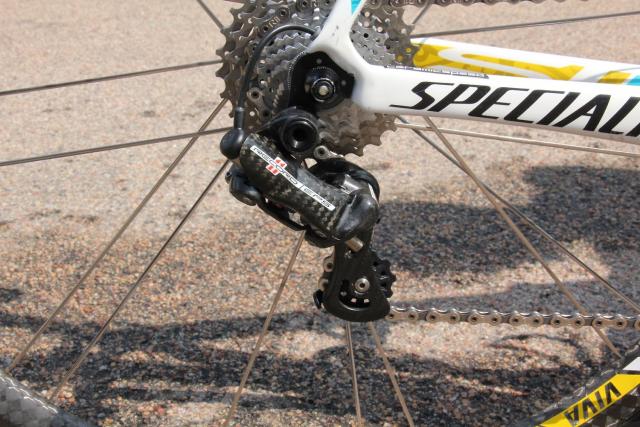
Astana use Campagnolo groupsets, Fuglsang’s bike being fitted with Record EPS components (we didn’t see a lot of top-end Super Record when we checked out team bikes prior to the start of the race).
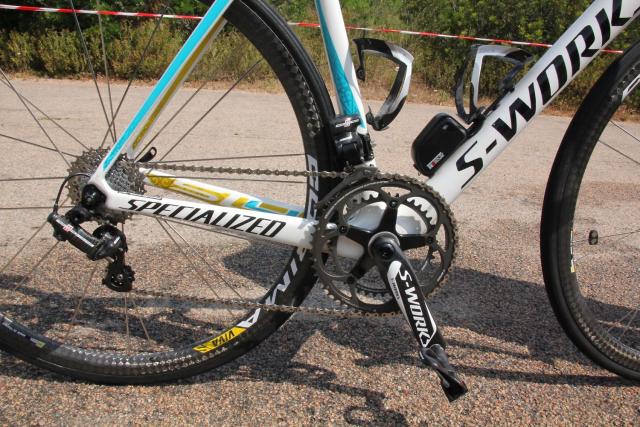
The exception is Specialized’s S-Works FACT chainset that comes with hollow carbon crank arms and an oversized alloy axle.
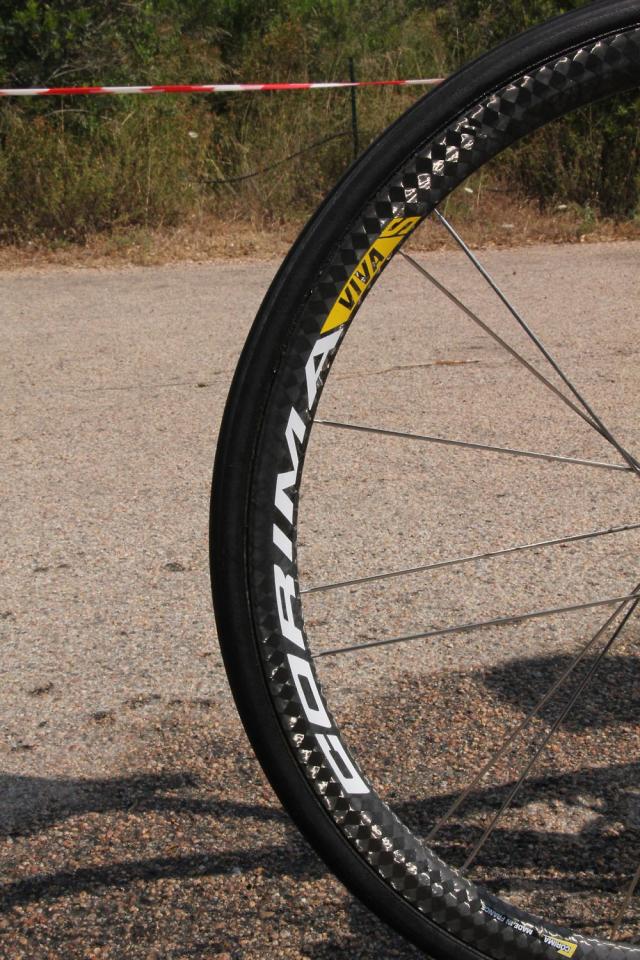
Astana use wheels from Corima, in this case the new Viva S. These come with 32mm-deep rims and 18 spokes up front, 20 at the rear. That spoking at the rear might look a bit random but there’s method in it: Corima use 12 spokes on the drive side and eight on the non-driveside.
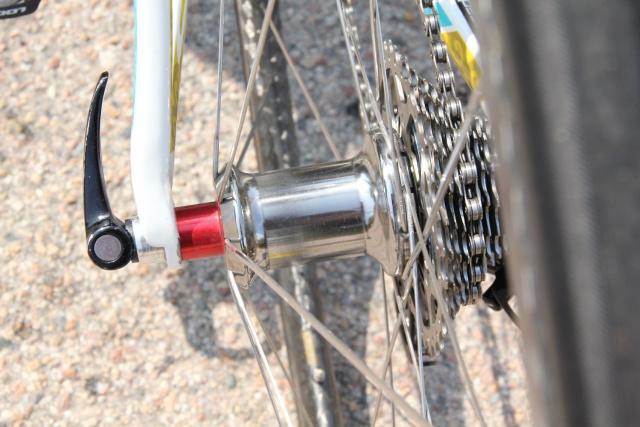
The chrome-plated S hubs look cool.
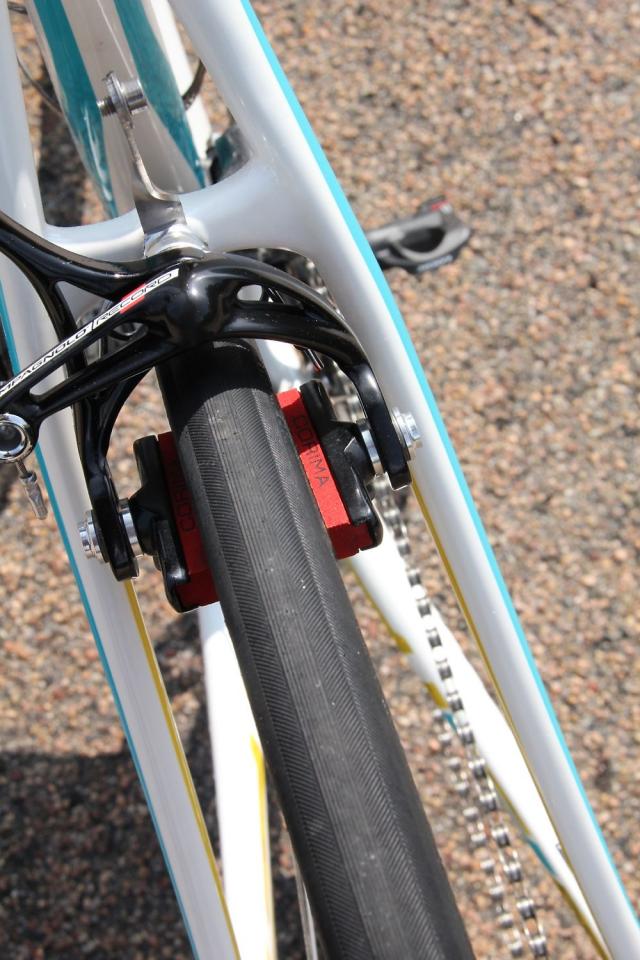
We can’t say the same about the brake shoes that house Corima’s own red carbon-specific pads. They look functional rather than pretty.
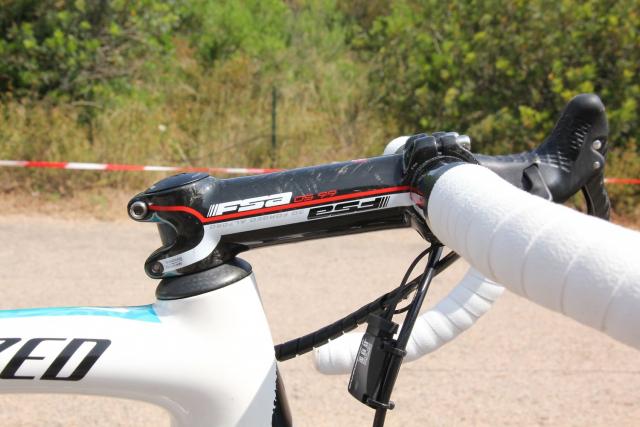
Cockpit components are from FSA who have a massive presence in the pro peloton. Although the OS99 CSI stem looks carbon, it’s actually aluminium under there with just a carbon skin. The CSI stands for Carbon Structural Integration and FSA reckon that the permanent bond between the carbon and the aluminium makes a difference to the performance. The faceplate is alloy/carbon too. It looks like Fuglsang takes a fairly normal length stem by professional standards – 130mm, something like that. Unlike many pros, Fuglsang goes for composite bars from FSA’s top-level K-Force lineup. They’re a carbon/Kevlar construction.
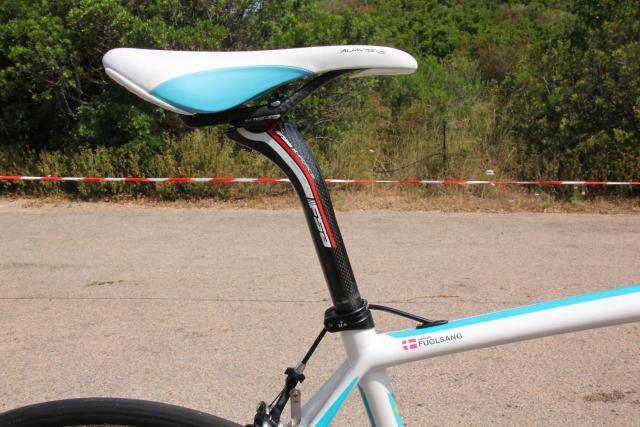
The seatpost is K-Force too. It’s a one-piece carbon-fibre construction with a really small top clamp to keep the weight down.

The saddle is a Fizik Aliante VS with carbon braided rails. The VS is short for Versus, denoting that, unlike most of Fizik’s saddles, it comes with a channel down the centre because some people feel that helps reduce pressure. Using an Aliante suggests that Fuglsang is a bull according to Fizik’s Spine Concept.
Mat has been in cycling media since 1996, on titles including BikeRadar, Total Bike, Total Mountain Bike, What Mountain Bike and Mountain Biking UK, and he has been editor of 220 Triathlon and Cycling Plus. Mat has been road.cc technical editor for over a decade, testing bikes, fettling the latest kit, and trying out the most up-to-the-minute clothing. He has won his category in Ironman UK 70.3 and finished on the podium in both marathons he has run. Mat is a Cambridge graduate who did a post-grad in magazine journalism, and he is a winner of the Cycling Media Award for Specialist Online Writer. Now over 50, he's riding road and gravel bikes most days for fun and fitness rather than training for competitions.
Latest Comments
- chrisonabike 1 sec ago
I've not seen anything particularly "scientific" on either side of the argument. As you say I think currently there are other variables in most...
- David9694 32 min 44 sec ago
Ram-raiders destroy Banbury M&S entrance in burglary https://www.oxfordmail.co.uk/news/24842236.ram-raiders-destroy-m-s-foodh...
- pait 51 min 1 sec ago
I used a Carradice saddle bag plus a full frame bag from Rogue Panda on a weeklong trip last year. Having only one of them would have made the trip...
- don simon fbpe 1 hour 38 min ago
Right whingers gonna whinge!
- bobrayner 2 hours 1 min ago
This is an article about exciting bikes for 2025...? If you want an article about exciting steel bikes in particular, I'm sure there's one from 1995.
- TheHungryGhost 2 hours 39 min ago
It was on Reporting Scotland - The BBC One Scotland news that comes on after the News at 6
- Backladder 4 hours 12 min ago
So it is only universal to the frames that are designed to work with it?
- mdavidford 6 hours 38 min ago
What a waste! - spending all that money on infrastructure on ships, when they don't even pay their bridge tax. And besides - no-one will use it -...
- Andrewbanshee 6 hours 40 min ago
I read the headline as Will Self. Blimey didn't expect him being on here, and getting all hot too.
- wtjs 6 hours 45 min ago
We (society) would probably get a lot more value out of using the sensors, computers, and controllers that were intended to enable self-driving...












































Add new comment
1 comments
Good looking bike.